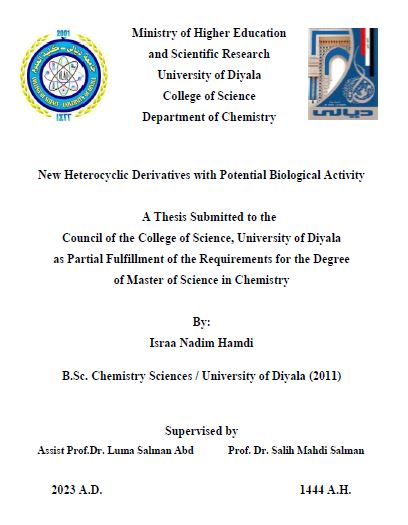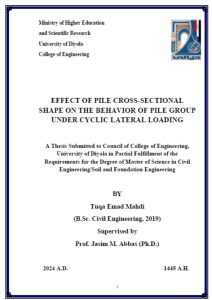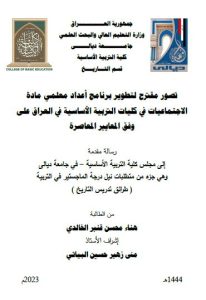اعلام المكتبة المركزية / المهندس مهند
Abstract
There are many antibiotic heterocyclic molecules used in the field of medical applications such as anti-cancer agents, anti-microbial and anti-viral, but unfortunately, cancer cells and infected cells can be resistances to medicines by the day. There is a real need continuously to develop or find out new analogs for that medicine. This work aims to synthesize new heterocyclic molecules able to overcome this problem using a simply accessible methodology, economic resources, and chemically stable products. 1, 1, 2-trimethyl-1H-benzo[e]indole was chosen as starting material which was easily modified by treatment with phosphoryl chloride to reach the synthon 2-(1,1-dimethyl-1H-benzo[e]indol-2(3H)-ylidene) malonaldehyde. The latter was coupled via Schiff’s reaction with four groups of organic chemicals including amino sugar (2-amino glucose and 6-amino glucose), aliphatic branched amines (methyl amine, and 2-amino butane), aromatic amines (aniline, benzylamine, and 4-methyl-o-phenylenediamine) and amino acids (alanine, valine, and tryptophan) compounds. As the synthon has two aldehyde groups the coupling via Schiff’s reaction should yield the di-substituted compounds of each series, but Schiff’s reaction produced only mono-substituted compounds of each series when short time reaction condition is applied even two equivalents of substrates were used. The three-dimensional structural investigation shows one of the two aldehyde groups of indole close to the two methyl groups is subjected to steric hindrance effects, which make it need a long time to react, therefore we can reach both mono and di-substituted indole with each series by controlling the reaction’s time by overcoming the steric hindrance effects.
The chemical structures and purity of the target compounds as displayed in scheme 1 and the stereoisomers and tautomers produced due to the nature of the produced compounds are characterized and identified using FR-IR, 1H NMR and 13C NMR
The biological investigation proves that some produced molecules are active as anti-bacterial against two gram-positive bacteria Staphylococcus aureus and Staphylococcus epidermidis and two gram-negative bacteria Klebsiella pneumonia and Escherichia coli in addition to Candida albicans as anti-fungal agents, which make this kind of chemical are suitable as a potential medical agent.
Other target molecules show a good activity against a human liver cancer cell line HepG2 inhibition at the optimized temperature degree of 310 K within 24 hours using two concentrations, which make this kind of molecules candidates as new potential anti-cancer agents suitable for medical applications.





